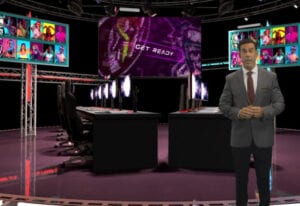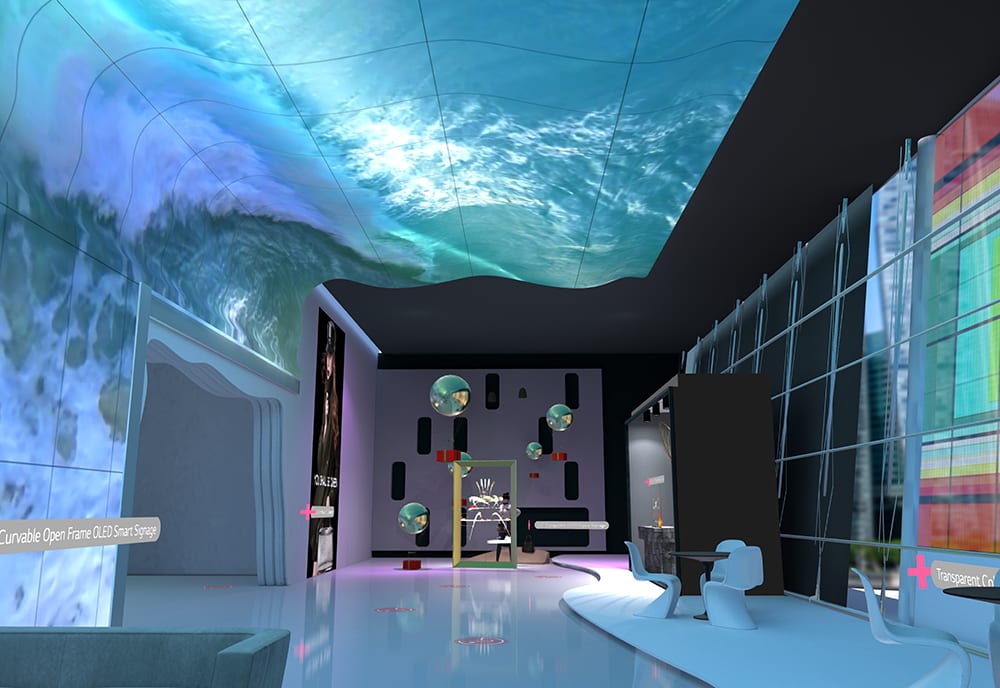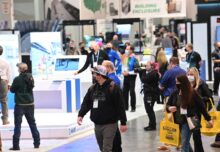A year ago this February when LG Business Solutions pulled out of ISE in Amsterdam over growing COVID-19 concerns, the b-to-b arm of LG that relies heavily on the trade show calendar decided it needed to play the long game. After months of research, the brand launched the DigiTour, an immersive and customizable 3D showroom that would allow the group to scale and leverage it through 2021 and onto into the hybrid event future.
“We knew trade shows would eventually come back, but we knew they would come back differently,” says Damaris Toma, experiential marketing lead at LG Business Solutions. “We needed to set the tone, this new way of doing events that’s right for us. And we didn’t want to simply launch something, because these digital and virtual tools can be very expensive. Instead, we thought: Why not do something that we can control, that we can own.”
 More on virtual experiences:
More on virtual experiences:
- Cadillac’s Global Director of Product Marketing on the Challenges of Virtual
- Insights on Developing an Impactful Virtual Event Measurement Strategy
Tasked with the challenge of showcasing high-end, large-scale, high-tech signage and screen products for use in expansive lobby, airport and stadium spaces, LG Business Solutions surveyed the virtual product landscape and settled on the Unreal Engine platform. Built from the ground up, the DigiTour virtual showroom leverages real-time 3D environments to allow attendees to walk through commercial spaces to view products in the context of their relevant environments.
The DigiTour includes four spaces for the verticals the brand is focusing on now—Corporate, Education, Control Room and Innovation. Within each space, participants are prompted by a host (an actor filmed in a studio) before they begin their first-person-view journey via navigational markers within the photorealistic setting. Visitors have a 360-view of products, from signage to video walls, so they can see all of the specs up close, including how thick a screen is, how tall it would be, and how it would look in a space—all the nuances of the products, which were reproduced via 3D CAD drawings. Easter eggs are planted throughout, including scenery from major cities pictured outside windows and a discoverable portal into a “bonus” residential space to explore.

The platform is fully customizable right down to the “host” of the experience, which could, in future phases, feature a sales lead or executive.
The DigiTour experience is both a marketing tool and a sales tool, and it gives the brand the ability to scale and grow get more immersive with the effects and functions, as well as host virtual events tied to the platform. For each product, visitors can click on a module to download case studies, spec sheets or connect live with a sales executive. Having “actionable next steps” was essential, Toma says.
“The customer doesn’t need to install anything, plug in anything, download anything—if they’re comfortable with a video call, it’ll pop right up,” she says. “Not everything is available when you’re not in person. We get that. But we’re going to make it as less painful as we can to do business this way.”
Toma’s top tips on developing a virtual environment built for an unknown future:
1. Optimize platforms for mobile.
Toma suggests reducing the barrier of entry for users as much as possible. Attendees for the foreseeable future will be perched on their sofas or at their kitchen tables at home, and many will be using mobile devices to access digital experiences.
“In looking at our stats, mobile accounts for more than 50 percent of usage for the platform, so it’s something that, yes, it costs more, it takes more development time, but make that investment,” she says. “Not only are people at home now, but once it becomes a hybrid platform and you’re able to go back to in-person events, you’ll be able to pull it up on a device on-site easily while speaking with a customer or client.”
2. Work closely with the sales team.
The sales team plays an important role and essentially functions as an additional user group for a virtual platform. Seek their input and think about how the platform can evolve to offer them more interactivity with customers. For example, hosting lunch-and-learns tied to the platform or working with sales teams from other verticals to insert non-endemic products into the experience. For example, the DigiTour right now includes a conference room space with a secret portal to then explore LG Business Solutions for the home or remote work. It could be a space to tie-in lifestyle product lines as well.
“The great thing for us is every single sales person uses it differently,” Toma says of the DigiTour. “It’s been a great learning for us that when you make it simple, everyone else can make it their own.”
3. Consider a phased approach.
LG Business Solutions is rolling out the DigiTour program in phases, with phase one serving as a “showcase” of all the different types of products that the brand produces, a kind of “flexing of our muscle,” as Toma puts it. In future phases, the brand plans to add more functionality and storytelling on portfolios of product as the company continues to roll out marketing messaging and as the brand aligns with any future virtual, in-person or hybrid events throughout 2021.
Check out the synergy between LG’s 3D virtual showroom
and one of its commanding entrances at CES.






